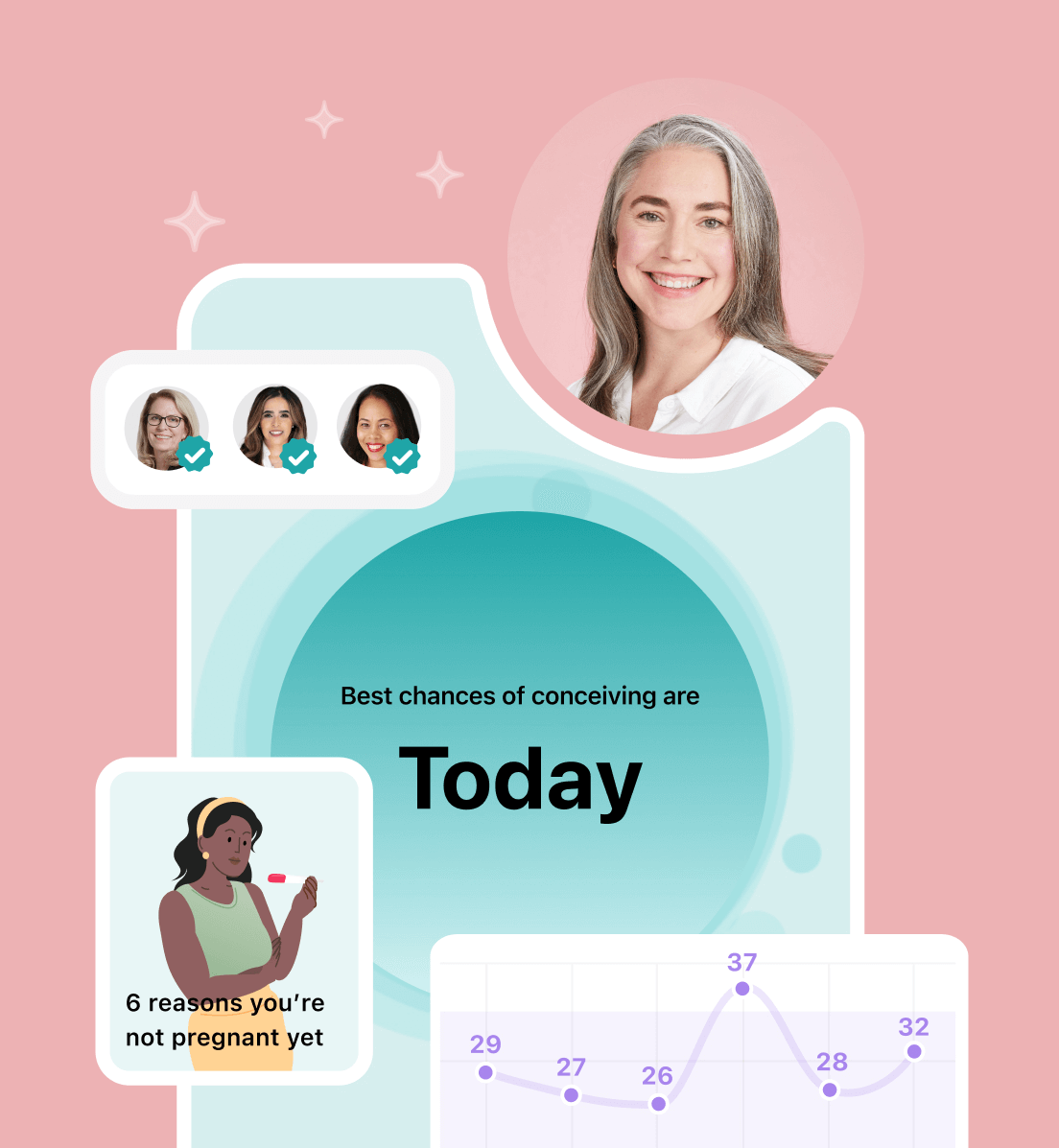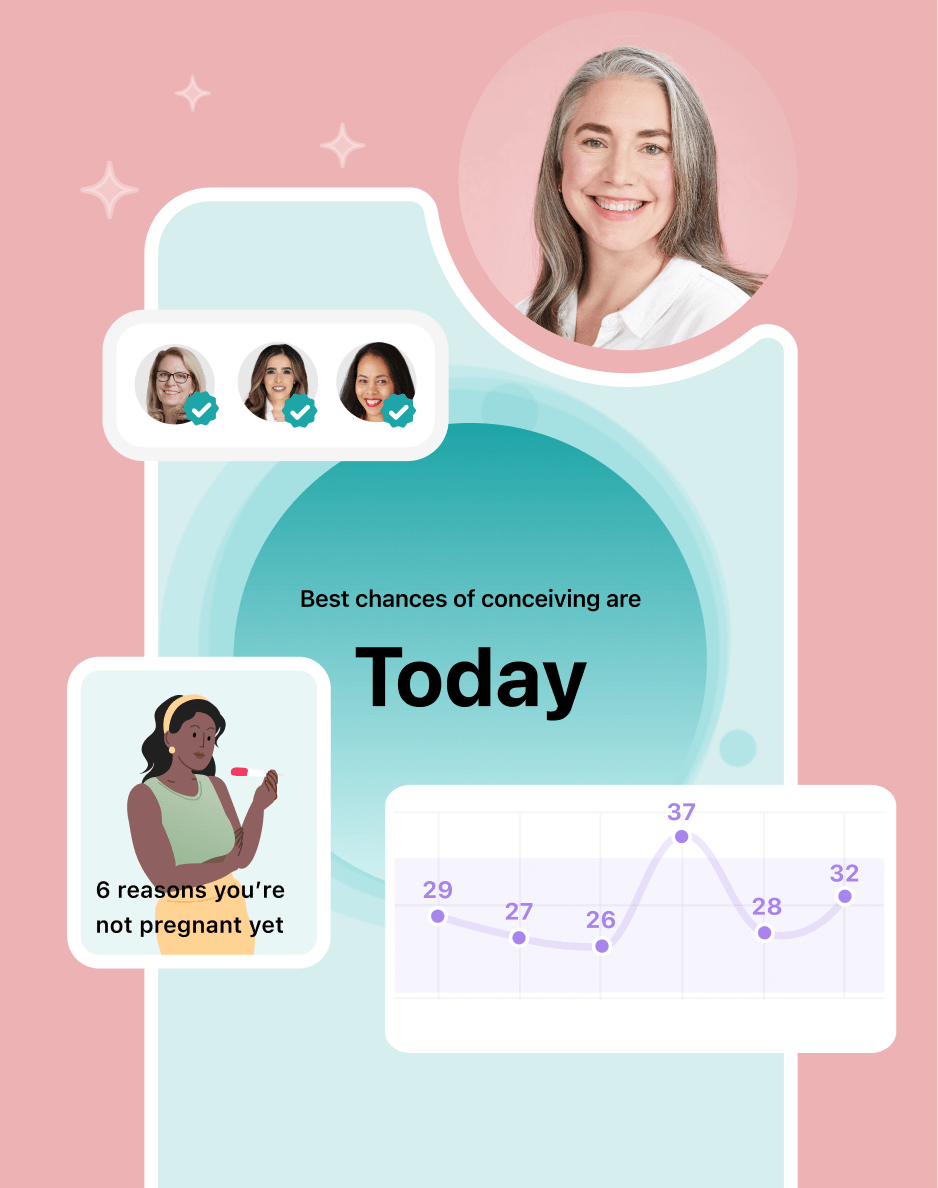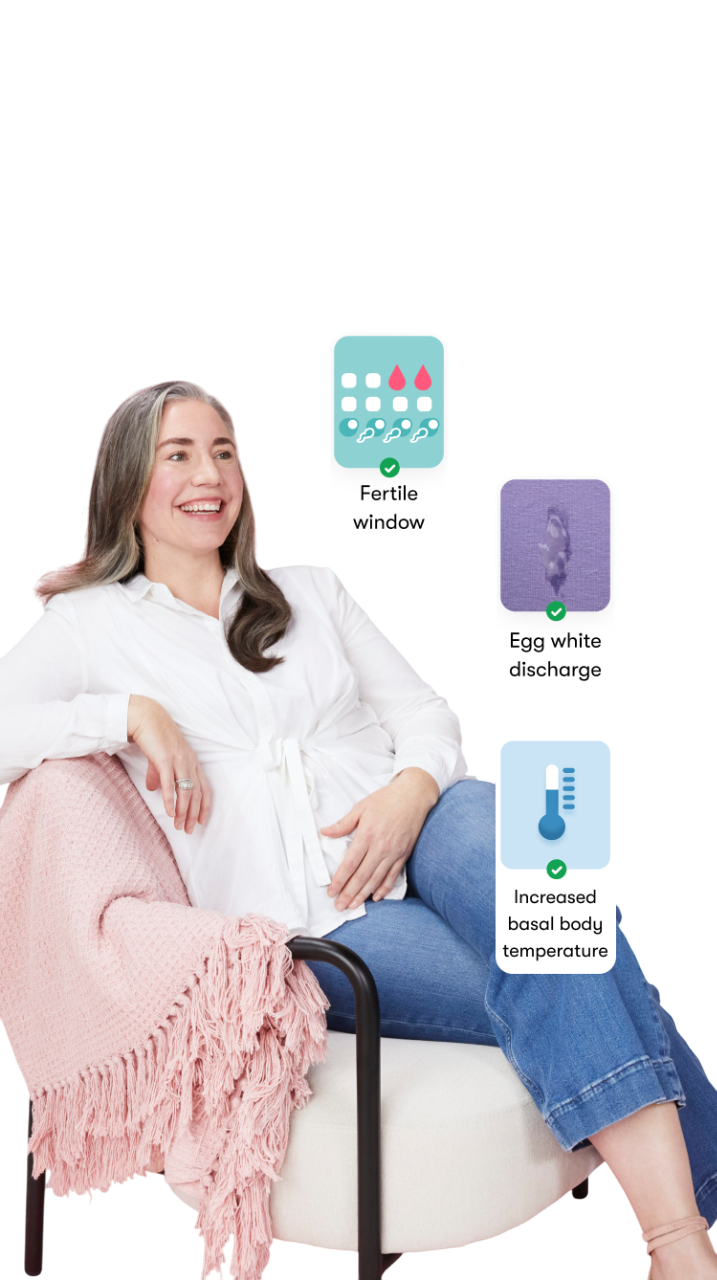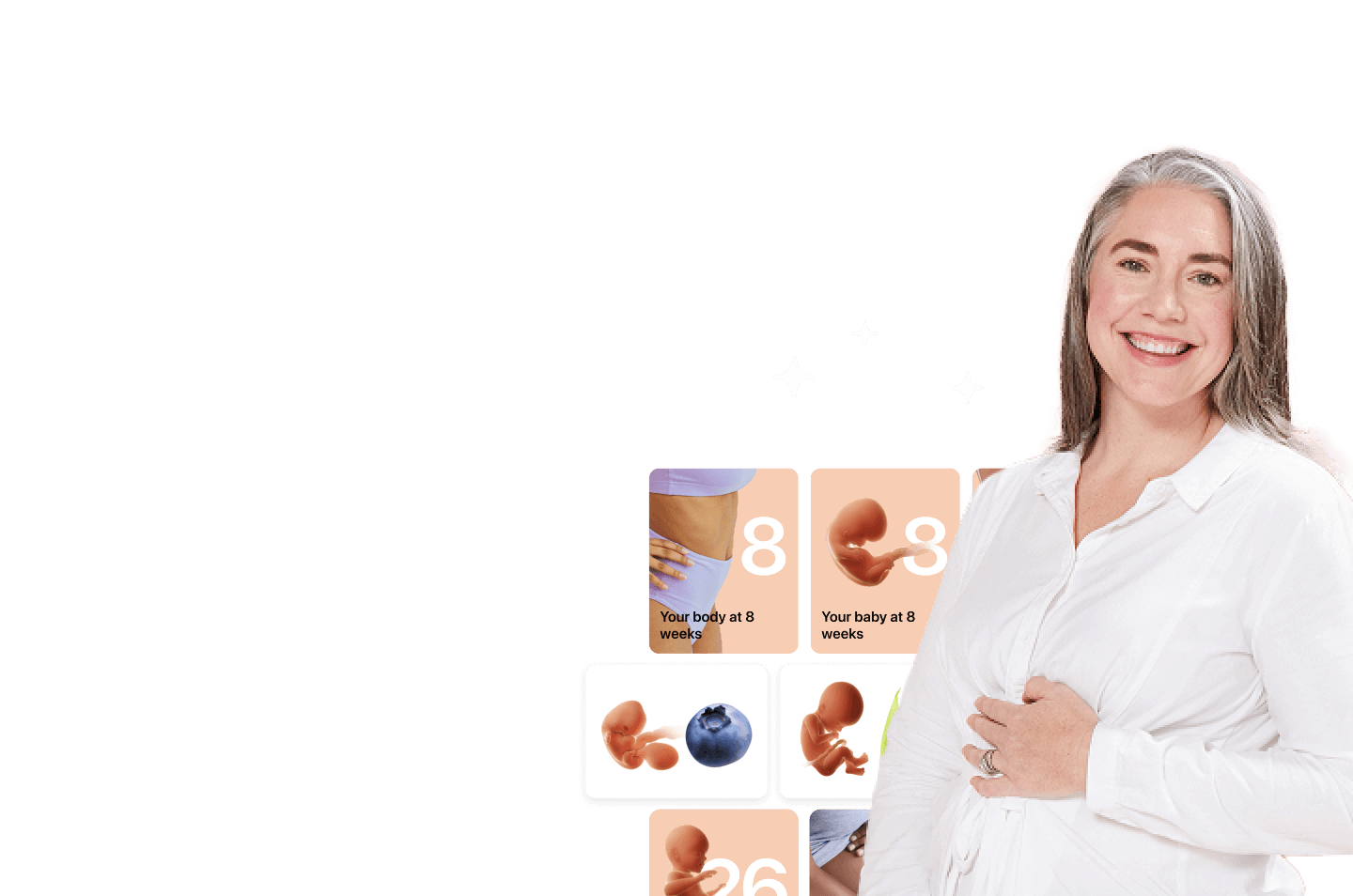Sometimes, it can feel like your period arrives at just the wrong time. Here, a Flo expert explains if you can end it faster once it’s begun and how to manage any symptoms you have.
-
Tracking cycle
-
Getting pregnant
-
Pregnancy
-
Help Center
-
Flo for Partners
-
Anonymous Mode
-
Flo app reviews
-
Flo Premium New
-
Secret Chats New
-
Symptom Checker New
-
Your cycle
-
Health 360°
-
Getting pregnant
-
Pregnancy
-
Being a mom
-
LGBTQ+
-
Quizzes
-
Ovulation calculator
-
hCG calculator
-
Pregnancy test calculator
-
Menstrual cycle calculator
-
Period calculator
-
Implantation calculator
-
Pregnancy weeks to months calculator
-
Pregnancy due date calculator
-
IVF and FET due date calculator
-
Due date calculator by ultrasound
-
Medical Affairs
-
Science & Research
-
Pass It On Project New
-
Privacy Portal
-
Press Center
-
Flo Accuracy
-
Careers
-
Contact Us
Can you make your period end faster?


Every piece of content at Flo Health adheres to the highest editorial standards for language, style, and medical accuracy. To learn what we do to deliver the best health and lifestyle insights to you, check out our content review principles.
You might have a birthday party, beach vacation, or pool day planned with friends, and it just isn’t a good time to get your period. So, it’s tempting to think: Can you make your period end faster? The short answer is no. Once your period has started, you can’t make it finish sooner in the same cycle.
In this article, we’ll help you to understand your menstrual cycle, from its length to different phases. If you wish you could shorten your period after it has started because period symptoms are negatively impacting your daily life, you should speak to your doctor.
The bottom line? Treatment is available to help shorten, lighten, or stop your periods — but this needs to be prescribed by your doctor. Outside of that, there are plenty of ways to help manage period symptoms, from regular exercise to painkillers.
Key takeaways: Can you make your period end faster?
- Your period marks the first day of a new menstrual cycle. It can be handy to know when to expect yours so you feel as prepared as possible. You can do this using an app like Flo.
- Once your period has started, there are no treatments or medications available to end your period faster in the same cycle.
- If you’re searching for a way to make your period end faster because you’re experiencing tough symptoms, then there are some ways you can manage these at home. Here, a doctor shares some tips that could work for you.
- If your period symptoms are negatively impacting your day-to-day life, then this isn’t something you need to manage at home by yourself. Speak to your doctor. They will be able to investigate what you’re feeling and will suggest the best next step.
- Some people find it helpful to track their symptoms over a few cycles to show to their doctor during their appointments. This may help you spot patterns. You can do this using an app like Flo.
Take a quiz
Find out what you can do with our Health Assistant
Understanding your menstrual cycle
First of all, what is your menstrual cycle? In a nutshell, the menstrual cycle is the time from the first day of your period to the first day of your next period. During your period, the inner lining of your uterus (called the endometrium) breaks down and leaves your body through your vagina.
Everyone’s periods are different, but on average, they last anywhere from two to seven days. While the average length of a menstrual cycle is 28 days, a regular menstrual cycle can last between 21 to 35 days. You can predict when your next period will arrive with our online period calculator or track your cycles using an app like Flo.
Some people experience irregular periods, which is when the gap between them is less than 21 days or more than 35 days, as well as missed and late periods. Speak to a health care professional if you are experiencing irregular, missed, and early or late periods. You can also find out more about the reasons for a delayed period and how stress may alter your period.
You’ll usually lose about 20 to 90 ml (roughly 1 to 5 tbsp) of blood during your period, but some people bleed more or less than this. If you’re concerned that your period is too heavy, contact a health care professional for advice.

The length of your period explained
The length of your period comes down to hormones: These natural chemical messengers regulate your menstrual cycle.
The menstrual cycle can be split into two phases: the follicular phase and the luteal phase, which are separated by ovulation (the point when one of your ovaries releases an egg). The four main hormones regulating the menstrual cycle are follicle-stimulating hormone (FSH), estrogen, luteinizing hormone (LH), and progesterone.
First up is the follicular phase. In this phase, FSH is released, prompting small fluid-filled sacs called follicles to develop in your ovaries. These follicles contain eggs, and at the end of the follicular phase, one of these eggs is released. This is ovulation.
LH also plays a part in this phase, helping to trigger ovulation. The follicular phase usually lasts between 14 and 21 days (but ovulation occurs on day 14 of an average cycle) and is known to fluctuate, especially as you get older. You’ll usually feel more energized and may have a higher sex drive as you near ovulation.
Next is the luteal phase, which begins after an egg has been released during ovulation. The follicle that released the egg, called the dominant follicle, changes into a structure called the corpus luteum. This releases progesterone, along with some estrogen. The increase in progesterone levels causes the endometrium to thicken, making it easier for a fertilized egg to implant into the lining.
If a pregnancy happens, your endometrium will remain thick, and your progesterone levels stay high. If you aren’t pregnant, your progesterone and estrogen levels drop. Your endometrium breaks down and leaves your vagina as your period. The luteal phase usually lasts between 12 and 14 days.
During the luteal phase, you may experience pre-period symptoms, and some people experience premenstrual syndrome (PMS). Pre-period and PMS symptoms can include:
- Mood swings
- Feeling angry, anxious, depressed, or irritable
- Feeling tired
- Breast tenderness
- Bloating
- Constipation
- Feeling gassy
- Changes in appetite, including cravings
- Having breakouts and spotty skin
- Back pain, especially in the lower back
- Headaches
- Changes in sex drive
Methods that may influence period length and flow
Once your period has started, you can’t stop it in the same cycle. We get it: Sometimes, periods come at the worst of times. But periods are also a natural part of your bodily functions. Embrace them as much as you can. That might mean slowing down or giving yourself the space to do things that make you feel good.
Having said that, medication can stop or lighten your periods before they start. A doctor may prescribe you medication if you have a particularly heavy flow, get bad cramps, or are struggling with PMS or premenstrual dysphoric disorder (a more severe form of PMS). Let’s explore these methods in more detail and find out more about how to delay your period.

Hormonal birth control
Some forms of hormonal birth control can make your periods lighter, less painful, or stop them altogether.
There are different types of hormonal birth control, and they work by releasing hormones that disrupt the regulation of your menstrual cycle.
Hormonal birth control includes:
- The combined pill: This releases estrogen and progestogen (a synthetic form of progesterone). If taken continuously, it can stop you from having periods altogether.
- The contraceptive patch: This involves wearing a small square patch on your skin, which releases estrogen and progestogen. The contraceptive patch can make your periods more regular, lighter, and less painful — but you may also bleed between your periods (known as spotting).
- Hormonal intrauterine device (IUD): A hormonal IUD is inserted into the uterus, where it produces a progestogen called levonorgestrel. This can impact ovulation depending on how much is released. IUDs can cause periods to become lighter, less frequent, or stop altogether. One study found that the Mirena brand of IUDs decreased menstrual bleeding by 80% after four months and by 100% after two years of use.
- The progestogen-only pill (mini pill): As its name suggests, this pill releases progestogen only. This pill can make your periods lighter or stop them altogether. But it can also cause spotting or periods to become more frequent.
NSAIDS
Nonsteroidal anti-inflammatory drugs (NSAIDs) are a common way of treating period pain and heavy menstrual bleeding.
Examples of NSAIDs include:
- Ibuprofen (like Advil, Motrin IB)
- Naproxen sodium (such as Aleve)
- Diclofenac
- Mefenamic acid
- Flurbiprofen
As NSAIDs can reduce how heavy your period is, it might feel like a good option if you want to ease your flow. However, this won’t be suitable for everyone, so make sure you speak to your doctor before taking a new medication.
Research has also shown NSAIDs to be effective in treating period pain. A study from 2023 found that NSAIDs were notably better at relieving period pain in women and girls than fake placebo pills. It’s thought that people who experience severe period pain produce too much of a chemical messenger called prostaglandin — and NSAIDs reduce the number of prostaglandins.
Tranexamic acid
Lastly, tranexamic acid (or TXA) is a medicine that helps your blood to clot. Your doctor may prescribe it if you get heavy periods. It can be taken as a tablet, injection, or in liquid form.
Q&A with a gynecologist about altering menstrual cycles
To dig into the details of how you can manage your period, we spoke to Dr. Jenna Flanagan, who is an assistant professor of obstetrics and gynecology at the University of Utah, Utah, US. Dr. Flanagan is part of Flo’s expert board and answered our questions on ending periods faster.
Is there a safe way to shorten the duration of a period once it has already started?
“There are no ways, methods, or medication that can stop a period in the same cycle once it has started,” says Dr. Flanagan. “However, if you are struggling with really heavy or painful periods, speak to your doctor.”
“They may prescribe you medication to make your periods lighter, less painful, and shorter. The ways to change periods are hormonal, and none are considered unsafe. Typically, it is treated with hormonal birth control of some sort,” she continues. “Any of the hormonal birth control options can have the side effect of causing periods to be shorter in duration.”
How does hormonal birth control influence the ability to skip or shorten periods, and are there any long-term risks?
“Pills [like the combined pill or the mini pill] prevent ovulation, so if the placebo week is skipped and they are taken continuously, then periods will be skipped because no ovulation occurs, and withdrawal bleeding won’t typically occur without placebo pills.” Dr. Flanagan explains. “Because of how estrogen and progesterone typically work while on hormonal birth control, the lining of the uterus does not become quite as thick when the menstrual cycle or withdrawal bleeding happens. There is less blood and less time bleeding.”
Are there any nonhormonal medications that can help shorten or lighten a period, and how do they work?
“Using NSAIDs in a scheduled fashion during your period can help lighten it by decreasing prostaglandin release, which in turn helps with cramping and blood loss,” says Dr. Flanagan. “TXA helps lessen bleeding by stabilizing fibrin (blocking fibrinolysis) to help your body block up the little spiral arteries in the endometrium that cause the bleeding.”
Is it medically safe to use hormonal birth control to skip periods for extended periods (e.g., several months)?
“Yes, other than risks associated with each method — such as blot clots or deep vein thrombosis with hormonal birth control — there is no risk to your body or fertility to skip periods. Many hormonal methods, like the progesterone IUD, have that side effect,” Dr. Flanagan says.
What impact, if any, do lifestyle factors like diet, hydration, and exercise have on period duration or intensity?
Dr. Flanagan says, “Exercise could possibly help with cramping, and also, if someone exercises regularly, there may be a correlation with lower total fat volume. Fat produces its own estrogen, which can further stimulate the uterine lining and lead to more bleeding.”
Track your period for better future planning
Want to understand your periods better? Flo’s period-tracking app is already used by more than 380 million women and people around the world to track periods, ovulation, and pregnancy.
Among its benefits, you can log your symptoms, and the app can estimate when your period will start and help you identify signs your period is coming — and many more personalized insights. One of the best ways to prepare for your period is by tracking it, so why not give it a try?


Hey, I'm Anique
I started using Flo app to track my period and ovulation because we wanted to have a baby.


The Flo app helped me learn about my body and spot ovulation signs during our conception journey.


I vividly
remember the day
that we switched
Flo into
Pregnancy Mode — it was
such a special
moment.
Real stories, real results
Learn how the Flo app became an amazing cheerleader for us on our conception journey.
References
“About Tranexamic Acid.” NHS, www.nhs.uk/medicines/tranexamic-acid/about-tranexamic-acid/. Accessed 30 Jan. 2025.
“Birth Control Options.” Cleveland Clinic, my.clevelandclinic.org/health/articles/11427-birth-control-options. Accessed 30 Jan. 2025.
“Combined Hormonal Birth Control: Pill, Patch, and Ring.” The American College of Obstetricians and Gynecologists, Nov. 2023, www.acog.org/womens-health/faqs/combined-hormonal-birth-control-pill-patch-ring.
“Conception.” Cleveland Clinic, my.clevelandclinic.org/health/articles/11585-conception. Accessed 30 Jan. 2025.
Dhamangaonkar, Pallavi C., et al. “Levonorgestrel Intrauterine System (Mirena): An Emerging Tool for Conservative Treatment of Abnormal Uterine Bleeding.” Journal of Mid-Life Health, vol. 6, no. 1, Jan.–Mar. 2015, pp. 26–30, DOI: 10.4103/0976-7800.153615.
“Follicular Phase.” Cleveland Clinic, my.clevelandclinic.org/health/body/23953-follicular-phase. Accessed 30 Jan. 2025.
“High Estrogen.” Cleveland Clinic, my.clevelandclinic.org/health/diseases/22363-high-estrogen. Accessed 30 Jan. 2025.
“6 Safe Ways to Stop Your Period.” Cleveland Clinic, 4 Apr. 2022, health.clevelandclinic.org/how-to-stop-your-period.
“Irregular Periods.” Cleveland Clinic, my.clevelandclinic.org/health/diseases/14633-abnormal-menstruation-periods. Accessed 30 Jan. 2025.
“Luteal Phase.” Cleveland Clinic, my.clevelandclinic.org/health/articles/24417-luteal-phase. Accessed 30 Jan. 2025.
“Menorrhagia (Heavy Menstrual Bleeding).” Cleveland Clinic, my.clevelandclinic.org/health/diseases/17734-menorrhagia-heavy-menstrual-bleeding. Accessed 30 Jan. 2025.
“Menstrual Cycle.” Cleveland Clinic, my.clevelandclinic.org/health/articles/10132-menstrual-cycle. Accessed 30 Jan. 2025.
“Periods.” NHS, www.nhs.uk/conditions/periods/. Accessed 30 Jan. 2025.
“NSAIDs (Nonsteroidal Anti-Inflammatory Drugs).” Cleveland Clinic, my.clevelandclinic.org/health/treatments/11086-non-steroidal-anti-inflammatory-medicines-nsaids. Accessed 30 Jan. 2025.
“Ovulation.” Cleveland Clinic, my.clevelandclinic.org/health/articles/23439-ovulation. Accessed 30 Jan. 2025.
“Period Irregularities to Get Checked Out.” Mayo Clinic, 22 Apr. 2023, www.mayoclinic.org/healthy-lifestyle/womens-health/in-depth/menstrual-cycle/art-20047186.
“Period Pain: Research Summaries – Period Pains: Can Anti-Inflammatory Drugs Help?” Informedhealth.org. Institute for Quality and Efficiency in Health Care, 12 May 2023, www.ncbi.nlm.nih.gov/books/NBK279323/.
“PMS (Premenstrual Syndrome).” NHS, www.nhs.uk/conditions/pre-menstrual-syndrome/. Accessed 30 Jan. 2025.
“Premenstrual Syndrome.” Cleveland Clinic, my.clevelandclinic.org/health/diseases/24288-pms-premenstrual-syndrome. Accessed 30 Jan. 2025.
“Premenstrual Syndrome (PMS).” Mayo Clinic, 25 Feb. 2022, www.mayoclinic.org/diseases-conditions/premenstrual-syndrome/symptoms-causes/syc-20376780.
Thiyagarajan, Dhanalakshmi K., et al. “Physiology, Menstrual Cycle.” StatPearls, StatPearls Publishing, 2025, pubmed.ncbi.nlm.nih.gov/29763196/.




